What is Heatstroke in Cats?
Heatstroke in cats can occur when the body overheats and their temperature rises above 104°F.
Heatstrokes can happen when cats overheat in the hot weather. A heatstroke in cats is always a medical emergency.
Heat Exhaustion vs. Heatstroke in Cats
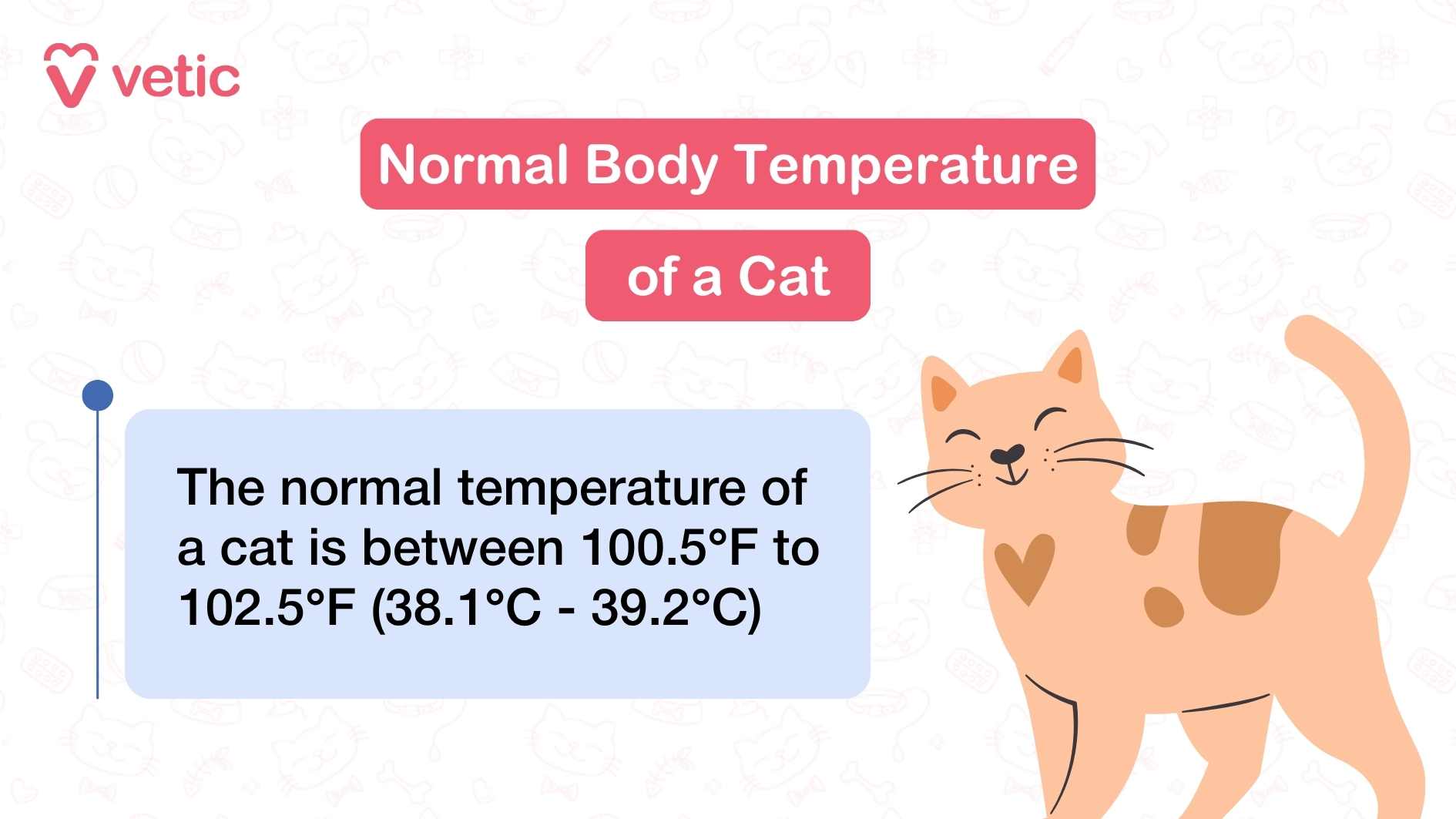
Heat exhaustion is the condition that can be followed by a heatstroke in cats. Heat exhaustion happens when a cat has been exposed to high temperatures or has been playing in the heat for some time.
The signs of heat exhaustion in cats –
- Restless behaviour
- Panting
- Drooling
- Excessive grooming
- Redness of nose and gums
Heat exhaustion can progress to a heatstroke if the signs of heat exhaustion aren’t taken care of.
Please note: Heat exhaustion and heatstroke can occur even when the temperature isn’t particularly high. Some double-coat, long-haired breeds with flat-faces, such as the Persian and Siamese can be predisposed to heat exhaustion after long durations of play.
What are the Signs of Heatstroke in Cats?
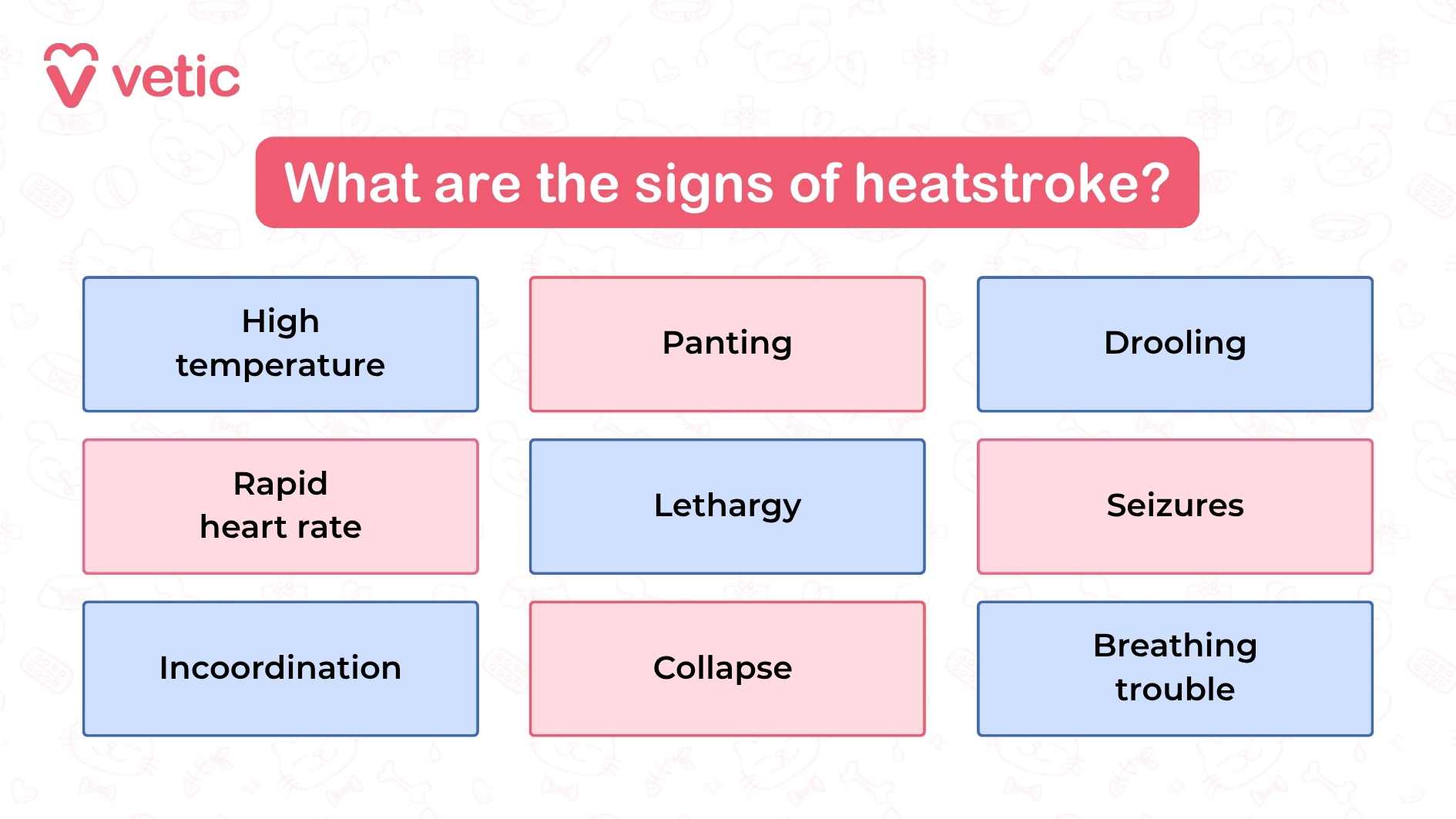
When a cat is exposed to hot temperatures for long periods of time they become prone to heatstrokes. Some signs of heatstroke in cats are –
- Panting
- Breathing difficulty
- Seizures
- Rapid heart rate
- Excessive drooling
- Diarrhoea
- Red nose, tongue and gums
- Seizures
- Incoordination
- Collapse
What Should You Do If Your Cat has a Heatstroke?
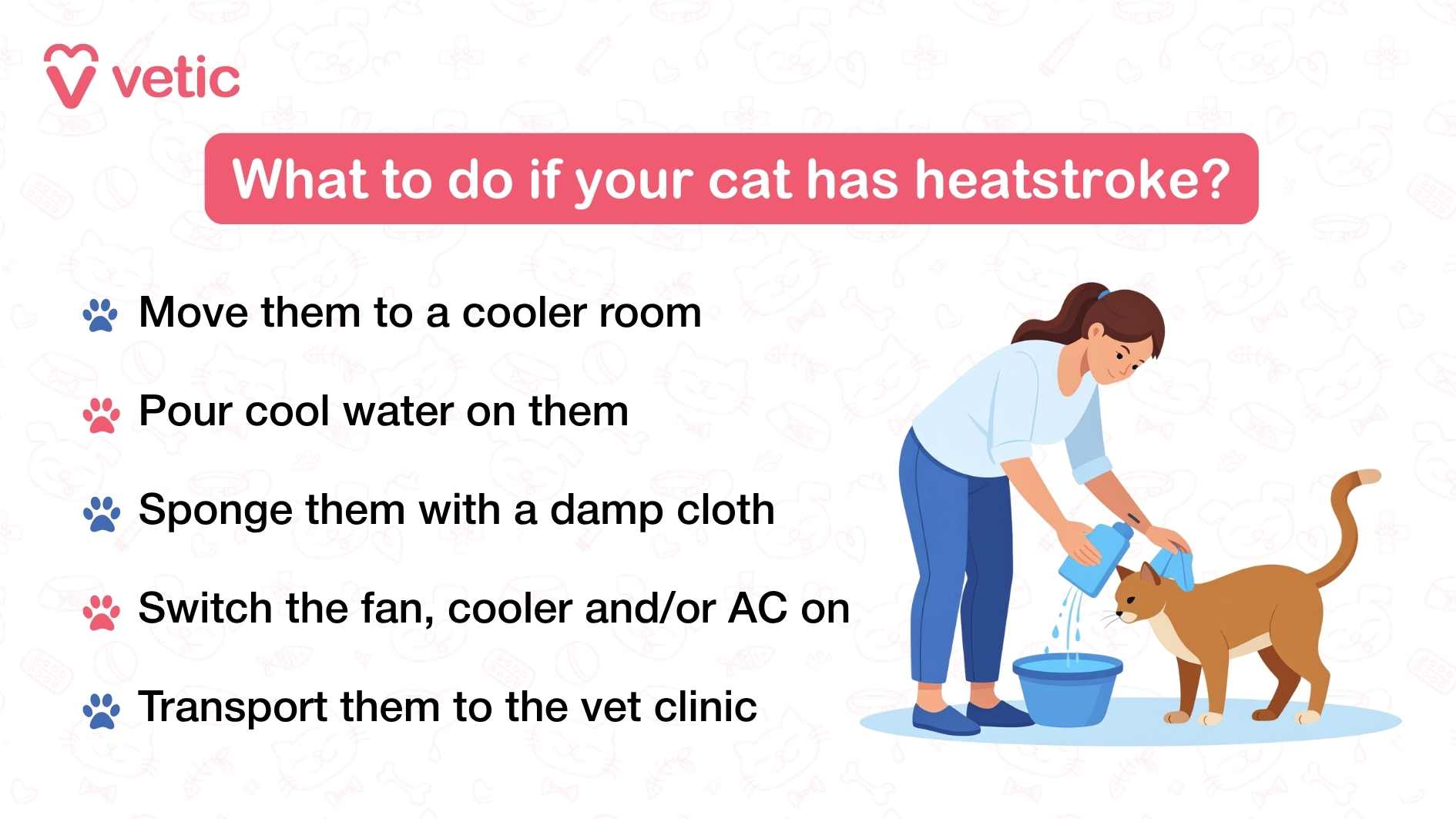
Here’s what you should do if your cat has a heatstroke
Move them to a cool location
Move them away from the sun or warm area into the room where the AC is on.
Apply cool water
Avoid cold water. Use plain cool water from the tap to wet your cat’s ears, belly and paws. Place them as close to the fan or cooler as possible.
Apply cool wet towels
Sponge them with cool wet towels. Do not leave the towels on them or it will prevent the evaporation of water and further cooling.
Apply ice packs
You can apply ice packs or ice wrapped in a cloth to your cat’s belly, ears and paws. It will help reduce their temperature gradually.
Give them some cool water
If your cat seems to feel better, give them some cool water for drinking. However, there’s a good chance that they will refuse it. Do not try to force feed them.
While you are doing these, take your cat’s temperature rectally. If it’s above 104°F, continue this process and prepare to transport your cat to the veterinary clinic near you.
Keep checking your cat’s temperature until it’s below 103°F and then transport them. In the case of heatstroke in cats, always follow one simple principle – cool them before you transport them!
Here’s what you should NOT do if your cat is experiencing a heatstroke
Immerse them in cold water
Immersing your cat in cold water will harm them. It will constrict all blood vessels and prevent the release of heat.
Apply wet towels for long periods
You should never leave wet towels for longer periods on your already overheated cat. These towels will absorb heat, become hot and prevent the evaporation of water from their body, impeding the cooling effect.
Wait after signs of heatstroke in cats
The biggest mistake you can make is waiting for the signs to go away on their own. Heatstroke is a serious condition and always an emergency. It needs to be dealt with promptly and methodically. Move your cat to the nearest emergency vet clinic within the next few minutes.
Heatstroke in Cats: Risk Factors
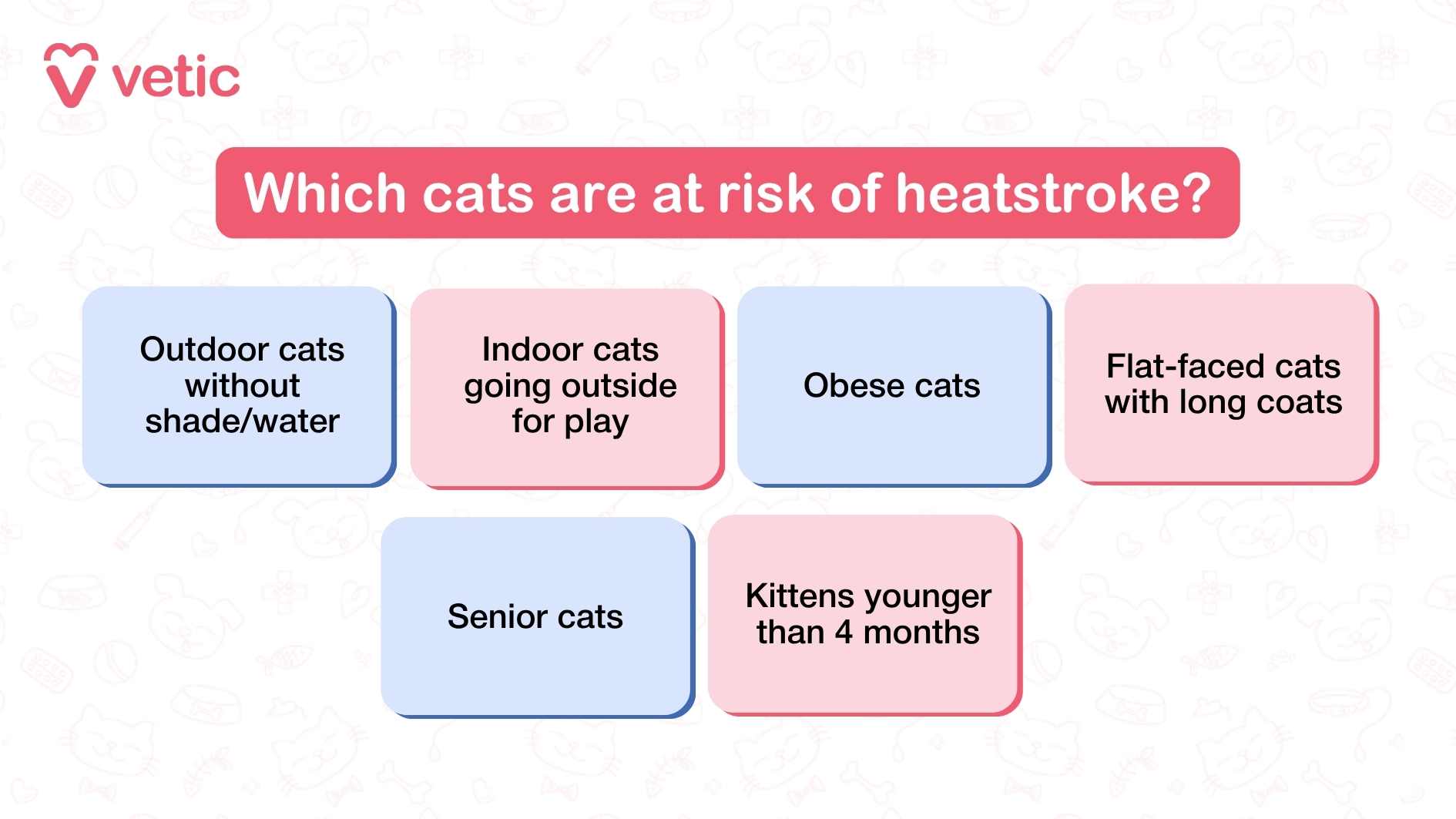
- Outdoor time in the direct sun, heat and humidity
- Brachycephaly (flat-faced cat breeds)
- Indoor cats without power/AC/cooler at home
- Senior cats
- Overweight cats
- Kittens under 4 months of age
- Cats with CKD or diabetes
- Cats with heart or respiratory issues
- Limited access to cool water
These are a few factors that make some cats more susceptible to heatstroke as compared to the others.
How is a Heatstroke in Cats Diagnosed?
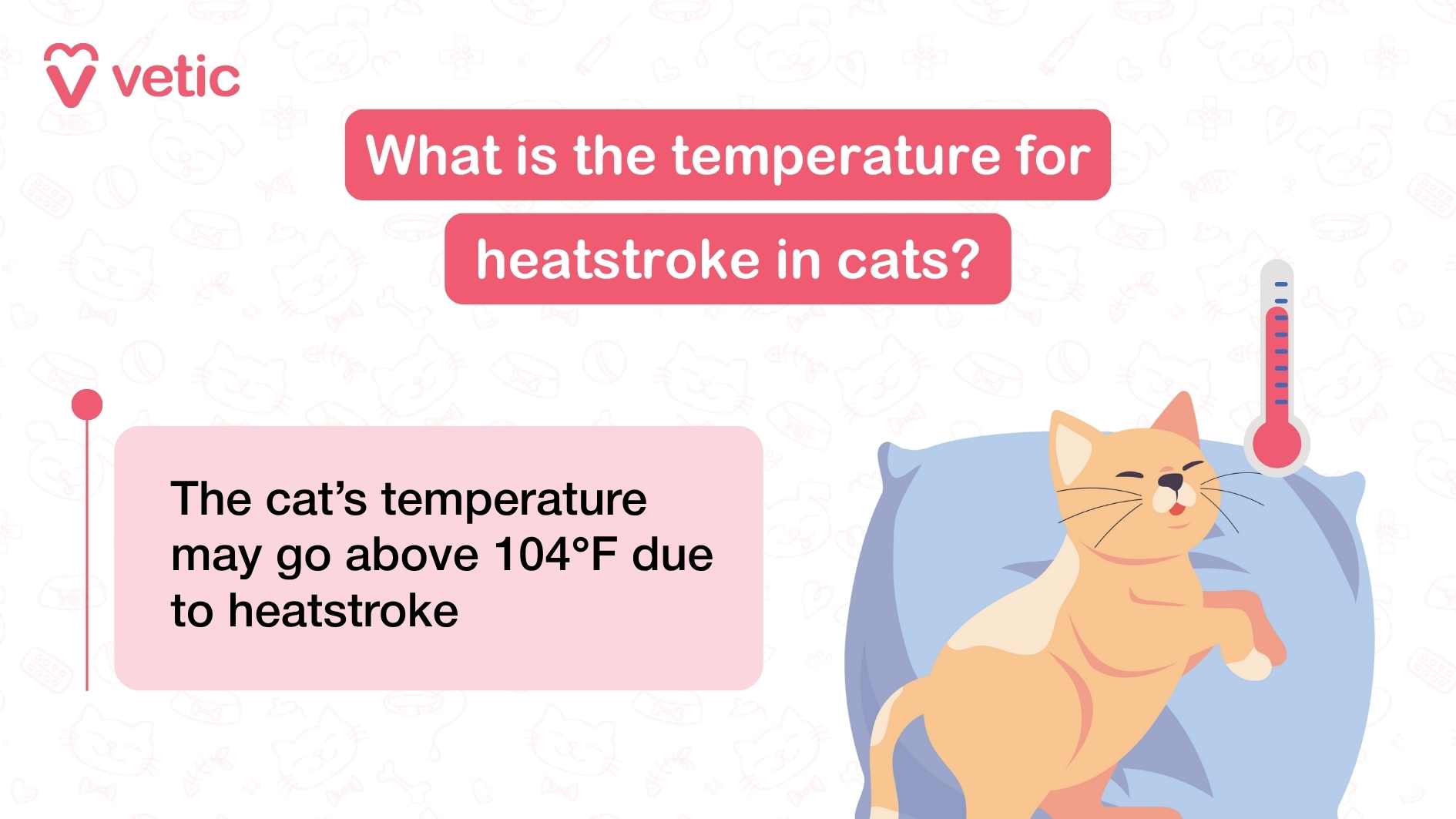
The diagnosis of heatstroke primarily depends on the cat’s clinical signs. In Indian cities, it is pretty easy to understand if a cat has heat exhaustion or heatstroke.
They will monitor the temperature to ensure it stays between 100.5°F to 102.5°F. It’s crucial the temperature doesn’t drop below 100°F.
Later on, the veterinary team might take blood samples for testing to see if there’s any organ damage.
Treatment for Heatstroke in Cats
Once you reach the veterinary clinic, treatment for heatstroke in cats will begin with intravenous (IV) fluid.
Always go to an experienced veterinarian for the treatment since the fluid volume and speed will also affect your cat’s heart rate and respiration.
The veterinary team will closely monitor your cat’s temperature change, heart rate and breathing. Since heatstroke victims often suffer from low blood sugar, the vet might include glucose in some form to their IV.
Your cat may need to stay overnight at the hospital for constant monitoring. Since cats with heatstrokes become susceptible to brain swelling, liver and kidney injury, sepsis and respiratory distress.
Most cats recover well after a heatstroke if quick action is taken. Only in the very severe cases of heatstroke the prognosis is poor.
Preventing Heatstroke in Cats
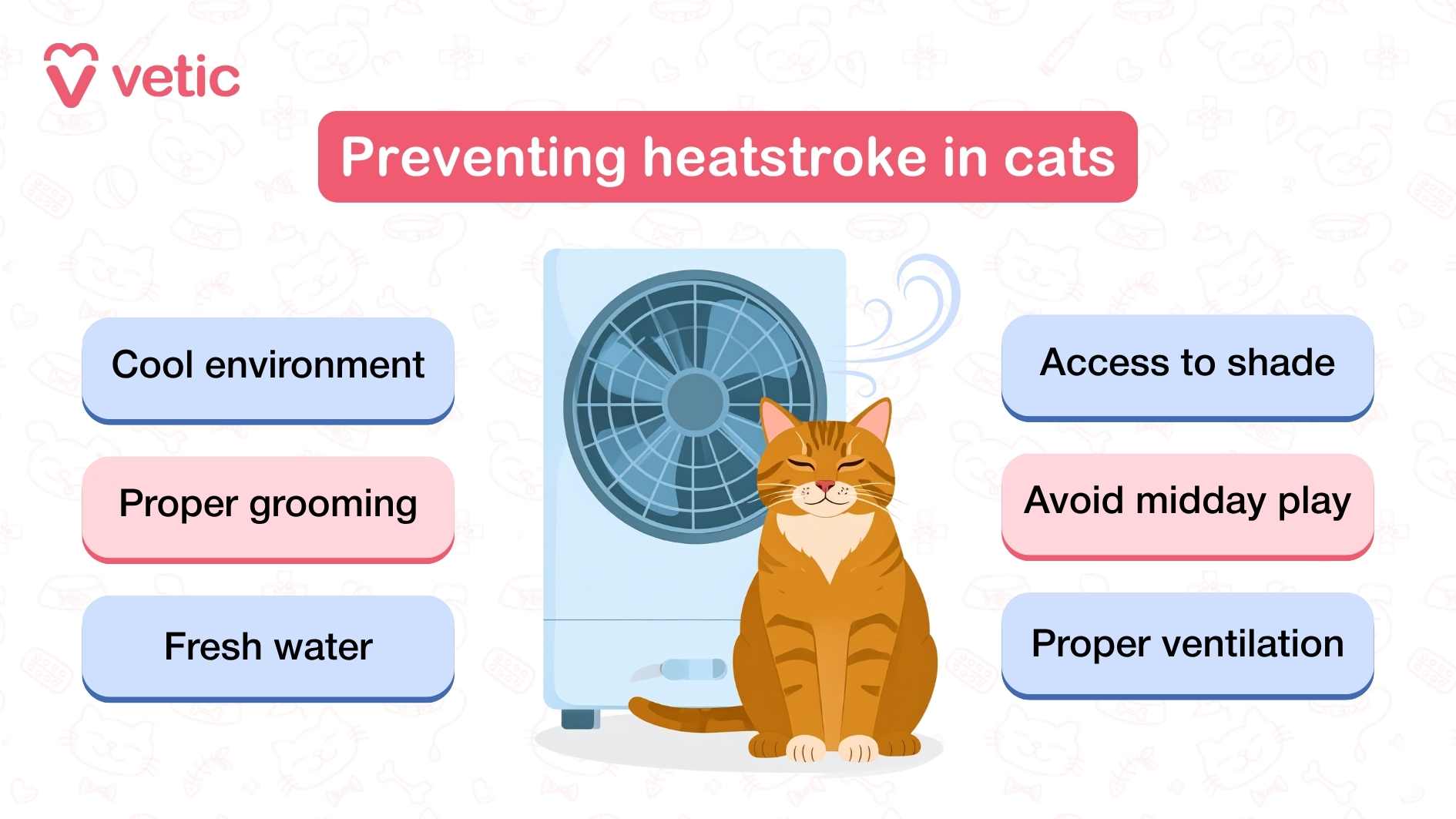
Can heatstroke in cats be prevented? Absolutely! You just need to follow these steps to prevent a heatstroke in cats –
- Keep your cats indoors
- If you have outdoor cats, leave them plenty of water and a cool place to rest
- If you have a senior or obese cat, keep the AC or cooler on
- Do not allow your cat to play during the hot afternoons
- Do not give your cat a 0 cut or shave them before or during summer
FAQs about Heatstroke in Cats
How do I understand my cat is feeling hot?
Cats will often pant, lie down in cooler areas and behave sluggishly when they are feeling hot. They might also show signs of breathing trouble. If you notice these, bring them to a cooler room and give them a cool bath, if possible.
At what temperature can cats get heatstroke?
The temperature can go above 104°F in the case of heatstroke in cats. There is no set temperature at which a cat can get a heatstroke. Cats can get a heatstroke even on a relatively cooler day if they overheat.
What is the normal temperature of a cat?
The normal temperature of a cat is 100.5°F to 102.5°F (38.1°C – 39.2°C).
How can I keep my cat cool without an AC?
Brush them daily, use a cooler or box fan, sponge them with a damp cloth, close the curtains and blinds, switch the fan on and make a cool bed with frozen water bottles for your cat!
Can heatstroke in cats have long-term effects?
Most cats can recover without any long-term effects, but those who do not receive immediate care can face permanent kidney damage, neurological problems and fatality.
Can I treat my cat at home after a heatstroke?
It is always wise to seek the help of a veterinary professional if you suspect your cat has had a heatstroke. Most cats will require intravenous fluids to prevent severe dehydration and organ damage.
Can cats get a heatstroke even if it’s not too hot outside?
Yes! Cats can overheat easily even while playing indoors without a cooling system. It’s important to keep an eye on your cat during the summer months to prevent heat exhaustion and heatstroke.
Will I always see signs of heat exhaustion in cats before a heatstroke?
In most cases heat exhaustion will precede a heat stroke, but cats are private creatures and it’s easy to miss the signs before a heatstroke sets in. It’s important to contact the veterinarian and follow the steps mentioned above even if you suspect your cat is having a heatstroke.
How do I save my outdoor cats from heatstroke?
Provide them with enough water and broth to drink throughout the day and a cool shade to rest.

